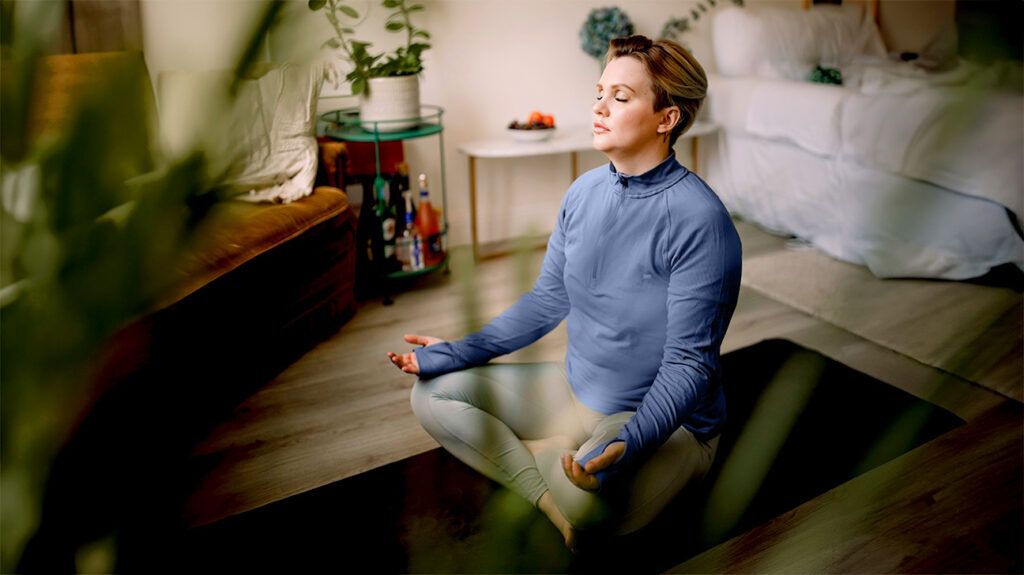
- Researchers say yoga may help people with epilepsy reduce the frequency of seizures.
- They add that yoga may also help people deal with the stigma sometimes associated with epilepsy.
- Experts say the study adds to wealth of evidence that mind-body work has physical benefits as well as stress relief.
Some “downward dog” could be man’s (and woman’s) best friend when it comes to managing epilepsy.
A new study reports that doing yoga may help reduce seizure frequency, anxiety, and feelings of stigma that frequently comes with having epilepsy.
The research was published today in Neurology, the medical journal of the American Academy of Neurology.
“People with epilepsy often face stigma that can cause them to feel different than others due to their own health condition and that can have a significant impact on their quality of life,” said Dr. Manjari Tripathi, a study author and neurologist with the All India Institute of Medical Sciences in New Delhi, in a statement. “This stigma can affect a person’s life in many ways including treatment, emergency department visits, and poor mental health. Our study showed that doing yoga can alleviate the burden of epilepsy and improve the overall quality of life by reducing this perceived stigma.”
Researchers looked at people with epilepsy with an average age of 30 in India.
They measured stigma based on participants’ answers to questions about being discriminated against, feeling different from other people, and whether they feel they contribute to society.
The scientists then identified 160 people meeting the criteria for experiencing stigma. Participants averaged one seizure per week and, on average, took at least two anti-seizure medications.
The team then randomly selected subjects to receive yoga therapy or sham yoga therapy.
Yoga therapy included exercises in loosening muscles, breathing, meditation and positive affirmations.
Each group participated in seven supervised group sessions of 45 to 60 minutes over three months. They were also asked to do yoga at home at least five times a week for 30 minutes, while tracking seizures and yoga sessions in a journal.
After three months of yoga therapy, researchers followed participants for another three months.
Researchers reported that people doing yoga were more likely to have reduced perception of stigma.
The team also discovered people who did yoga were more than four times as likely to have more than a 50% reduction in their seizure frequency after six months than the people who did sham yoga.
There was also a significant decrease in anxiety symptoms for those who did yoga compared to people who did not. Researchers said they saw improvements in quality of life measures and mindfulness.
“These study findings elevate the need to consider alternative therapies and activities for people with epilepsy facing stigma,” Tripathi said in a statement. “Yoga may not only help reduce stigma but also improve quality of life and mindfulness. Plus, yoga can be easily prerecorded and shared with patients online using minimal resources and costs.”
The authors acknowledged that a limitation of the study was that participants self-reported their seizure frequency and they may not have remembered all the information accurately.
Dr. Sandipan Pati, an associate professor of neurology with McGovern Medical School at UTHealth Houston who was not involved in the study, told Medical News Today that stress is an important role in whether someone’s epilepsy worsens.
“If stress is managed well, then the outcome of disease can be better including quality of life,” Pati said. “In epilepsy, stress plays a very important role by precipitating seizures and worsening sleep.”
Ryan Glatt, a senior brain health coach and director of the FitBrain Program at Pacific Neuroscience Institute in California who was not involved in the study, told Medical News Today the study adds to the existing body of evidence that mind-body exercise practices, such as yoga, can have mental health benefits.
“Future studies may incorporate different groups comparing yoga to meditation and standard-of-care treatment to better understand the specific benefits of yoga and other stress-reducing interventions,” Glatt said. “More research is needed to better understand how yoga might benefit those with epilepsy, but there may be effects on stress, brain activity, and neurotransmitter function according to this 2012 study.”
Dr. Juliann Paolicchi, the director of Pediatric Epilepsy of Neurology at Staten Island University Hospital in New York, is a yoga practitioner who was not involved in the study.
She said that while the effects of yoga have been studied extensively, this study is novel in that it focuses on the stigma of the condition. But there are still questions to be answered, she said.
“The ‘why’ is an even more important aspect? Because they felt better as a whole about themselves? Because they felt less stress, anxiety, and tension overall? Because they felt more control over their epilepsy? These issues lead to even more interesting exploration from this study,” Paolicchi said.
Paolicchi added that yoga doesn’t just affect the mental state of someone with epilepsy.
“Regulated breathing and guided meditation have been shown to stimulate the parasympathetic nervous system through the vagus nerve,” Paolicchi said. “Interestingly, vagus nerve activation through directed neuromodulation pacemakers have also been shown to reduce seizures over time and lessen the impact of seizures.”
“Vagus nerve stimulation also decreases the length, severity of seizures and the post-ictal recovery phase. It is just speculation, but the connection between these modalities is intriguing,” she added.
Paolicchi said she can attest to the calming, grounding power of yoga.
“Regular utilization of breathing techniques can also provide a decrease in anxiety and stress,” she said. “I regularly practice brief sessions of focused breathing in my clinics of epilepsy, anxiety, and migraine patients to demonstrate the ease and accessibility of these techniques. And everyone prefers non-pharmacologic therapies to their conditions.”